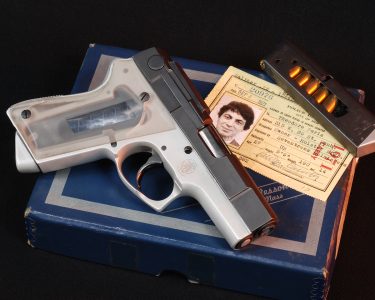
The ASP pistol, based off the Smith & Wesson Model 39 9mm, was an extremely advanced compact defensive pistol. Images courtesy of the author.
It has been more than a quarter century since the Soviet Union collapsed and the Berlin Wall came down. However, between 1947 and 1991, NATO and the Soviet Union were on a continuous war footing. The world was a smaller place. The Cold War was hot, the threat was real, and the battles were fought on a daily basis from New York to Moscow. There was no internet or blogs and those who were in the know didn’t share their knowledge with those that weren’t. The term “dangerous men” was a compliment to those who lived and fought in the shadows. These men roamed the world armed with exotic weapons that were only discussed in closed circles. It was the time of the modern gunfighter and the birth of the ASP!
Deepening Mystery
The story of the ASP reads like a Ludlum or Flynn novel. In 1966, a young Paris Theodore founded a custom holster company known as Seventrees Ltd. Located in New York City, on West 39th Street, Seventrees designed and produced “modern” concealment holsters for professionals. The company’s clientele ranged from NYPD detectives to “spooks” from a variety of countries. Documents show that Seventrees was awarded several contracts from a variety of U.S. agencies including an order for handcuff cases from the United States Secret Service.
The holster business, while both legitimate and profitable, was only part of the story. Located in the back room behind a vault door, Seventrees’ sister company, Armament Systems and Procedures (ASP), was a clandestine laboratory that worked with various government organizations designing and producing specialized weapons. In fact, Theodore designed an “experimental submachine gun,” complete with a shoulder holster, a belt holster, and a unique sight.
However, the most lasting project from Armament Systems and Procedures was the ASP pistol. According to Theodore, the ASP was developed on behalf of a government agency who had a need for a concealable handgun chambered in a “major caliber.” During the early development, numerous 1911s, Commanders, and the Browning P-35 Hi Power were cut down and reconfigured. In each case, the end result was found lacking.
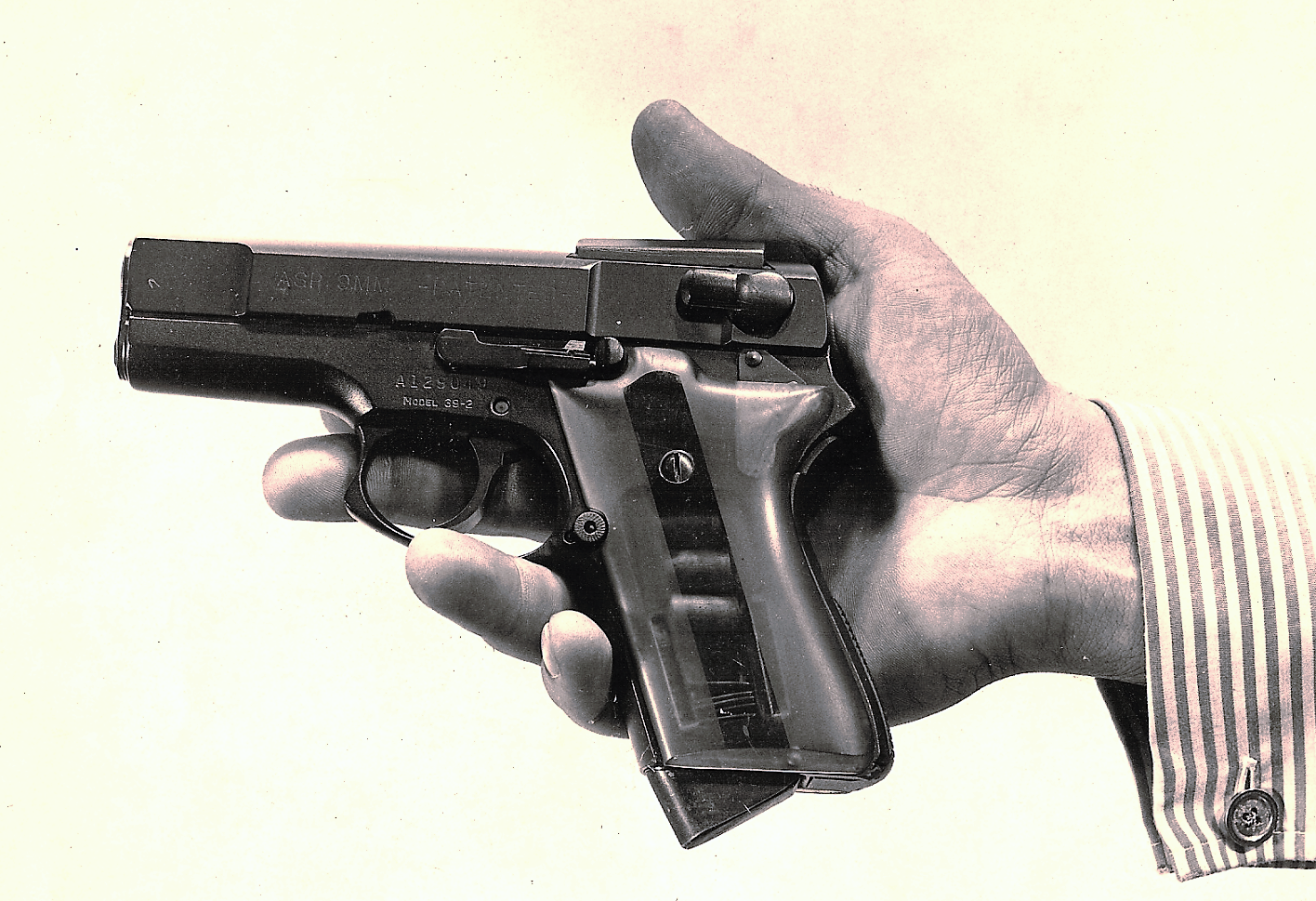
The ASP was extremely compact, with rounded edges and an intriguing round-counter window cut into the grip panels.
Solid Foundation
Theodore finally settled on the Smith & Wesson Model 39 as the base platform for the ASP. The Model 39 was introduced in 1954 to compete in the U.S. Army service pistol trials and was offered to the commercial market in 1955. The Model 39 featured an aluminum frame, 4-inch barrel, and a double-action, fire control system. It was chambered in 9mm with an eight-round magazine capacity. The most notable feature of the Model 39 was the one-piece, deeply curved back strap. To this day, the 39 fits my hand better than any pistol I have ever owned.
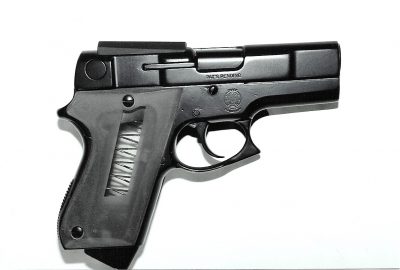
The trigger guard of the ASP was recut and welded to have a forward recurve, something that came strongly into vogue later in the 1980s.
The ASP was the result of some 212 modifications on the stock Model 39. The most dramatic modification was the reduction in the size of both the slide and frame. The slide and barrel were shortened by ¾ inch while the butt of the frame was reduced by 9/16 of an inch. Both reductions required extensive internal modifications with regard to the barrel bushing, recoil spring and guide, the mainspring and back strap assembly. To lighten the slide, the muzzle end was tapered. To further reduce the size, the hammer spur was removed and the thumb safety was shaved. Each pistol came with three reduced-size magazines that featured a patented finger rest base plate.
One striking feature of the ASP was the uniquely shaped trigger guard. The standard trigger guard was cut and a hooked extension was heli-arc welded onto the pistol using a comparable alloy. The design was patented as a “forefinger pocket” and designed to aid in a finger forward, two hand grip. The forward half of the trigger guard was reduced in width by 50% to allow improved access. This reduction was tailored for either right- or left-handed shooters.
The ASP’s sighting system was revolutionary. Theodore’s patented sight, called the Guttersnipe, consisted of a machined block of steel with a tapered channel that ran longitudinally. The sides and bottom of the sight channel were painted yellow for high visibility. There was no front sight. The Guttersnipe required the shooter to subconsciously balance the yellow panels on the sides and bottom of the channel to align the ASP properly. In practice, the Guttersnipe was extremely fast to acquire and was “battle” accurate.
Theodore understood that it was rare for anyone involved in a violent encounter to keep track of the number of rounds that were expended. To that end, he cut a large witness window in both sides of the magazines and equipped the ASP with Plexiglas stocks. This allowed the user to visually observe how many rounds were in the magazine. It also added one more exotic touch to the pistol.
The entire design of the ASP was focused on the rapidly changing dynamic in a moving gunfight. To quote Theodore in a Combat Handguns article, “Our mission was to create a major-calibre weapon which was readily concealable yet could be brought into action with “the speed of an impulse.” That was pretty shocking in 1970! Every edge was radiused and it was void of any textured gripping surfaces. Instead, the shape of the grip and trigger guard caused the pistol to seat in the hand during a panic draw.
Rounding Out the Package
Seventrees produced a number of accouterments that complemented the design and function of the ASP. The DCL was an abbreviated double magazine pouch that utilized a magnet to retain the magazine. While offering both traditional and inside the waistband holsters, the most unique holster was the SMZ shoulder rig. The SMZ was a skeletal holster with a tri harness that carried the pistol in a muzzle up position. According to the Seventrees catalog, the SMZ was “restricted.” The catalog also states, “These are shown, fitted and demonstrated on a personal basis only to officers or operatives with verified credentials.” The portion of the photo that shows how the holster secures the pistol was actually cut out of the catalog page.
The ASP was specifically designed to engage and neutralize a threat. How effective was the design? According to several reliable sources, during a demonstration, an intelligence officer was able to draw the ASP from concealment and engage a target at 7-yards with 22 rounds including two reloads, in seven seconds. All shots could be covered by the palm of one hand!
The earliest article that I have been able to find was written by noted writer George Nonte in the February 1971 issue of Guns. The article covers the development of the pistol and goes into detail about ammunition selection to include Canadian 9mm subgun ammo as well as two loads from Super Vel. Nonte reported that the 112 gr. JSP load chronographed 1,223 fps and the hot 90 gr. JHP chronographed at 1,430 fps. The pistol shown in this article was a prototype. There was also a mention of chambering an ASP in a specially loaded .38 Super round.
In 1972, Nonte wrote a second article that appeared in Popular Guns. The article was notable in that it contained the first published photos that showed the unfinished modified components. The pistol Nonte is shown shooting is an early ASP that features a back slide, matte gray frame and cut down factory stocks. At the time of the article, anyone wanting an ASP was required to provide a serviceable Model 39. The fee for the conversion was $225.00.
The fact that Nonte had access to the early guns was somewhat of a mystery until I discovered that Nonte was Theodore’s partner in the ASP project. Documents show that Nonte not only aided in the development and testing of the ASP but was also directly involved in the manufacturing process. Correspondence between Theodore and Nonte lists each gun, by serial number, which was sent to Nonte for the conversion. It would appear that the two had a falling out and terminated the agreement in the early seventies.
Theodore provided samples to various government agencies and the ASP became something of an enigma as well as a status symbol. While the articles had placed the pistol in the public’s eye, the majority of end users were quiet professionals. Theodore wrote that the Commanding Officer of the American Embassy security detail in Saigon carried an ASP. He also mentioned that there were several full-automatic and low-signature versions in the hands of intelligence operatives. Company archives also show a line drawing of a detachable shoulder stock that was being considered.
While Theodore was creative in his own right, sources report that his business practices were not always sound and he made substantial enemies. This, along with other issues, resulted in Seventrees and ASP closing their doors in the mid to late seventies. The Seventrees line of holsters was purchased by Ken Null. Ken still offers many of the original Seventrees-designed holsters to include the SMZ.
The Next Generation
Kevin Parsons purchased Armament Systems and Procedures and produced the ASP pistol for several years. Parsons is attributed with taking the design and applying modern machining processes to the conversions. These second generation pistols were marked ASP, Appleton, WI, and were considerably cleaner than the NY guns. The most notable change involved making the Guttersnipe from injection molded polymer. The polymer sight was attached to the slide with an industrial strength adhesive.
Parris Theodore died on November 16, 2007, at the age of 63. His obituary, in the Wall Street Journal, described him as the “Real-Life Q” and describes Theodore’s 1975 appearance before the U.S. Senate committee investigating the Central Intelligence Agency.
ASP pistols can still be found on the used market. The original New York guns are relatively rare and bring a premium. The Wisconsin guns are more prevalent and, depending on condition and accessories, can be found for under $2,000
It is interesting that 43 years later, the ASP is still considered, by some, as “cutting edge.” Far from being an antique, many of the features found on the ASP are still relevant today. Some consider imitation as the sincerest form of flattery. Some of the ASP’s design features have been copied and applied to other pistols. However, in my opinion, no one has been able to copy the ergonomics and functionality that makes the ASP more than the sum of the parts. Well ahead of its time, and surrounded by mystery, the ASP continues to be an enigma that is representative of a simpler, but more dangerous time. It is the classic Cold War warrior.
To purchase a Smith & Wesson Model 39 on GunsAmerica.com, click this link: https://www.gunsamerica.com/Search.aspx?Keyword=39%209mm%20smith%20wesson.

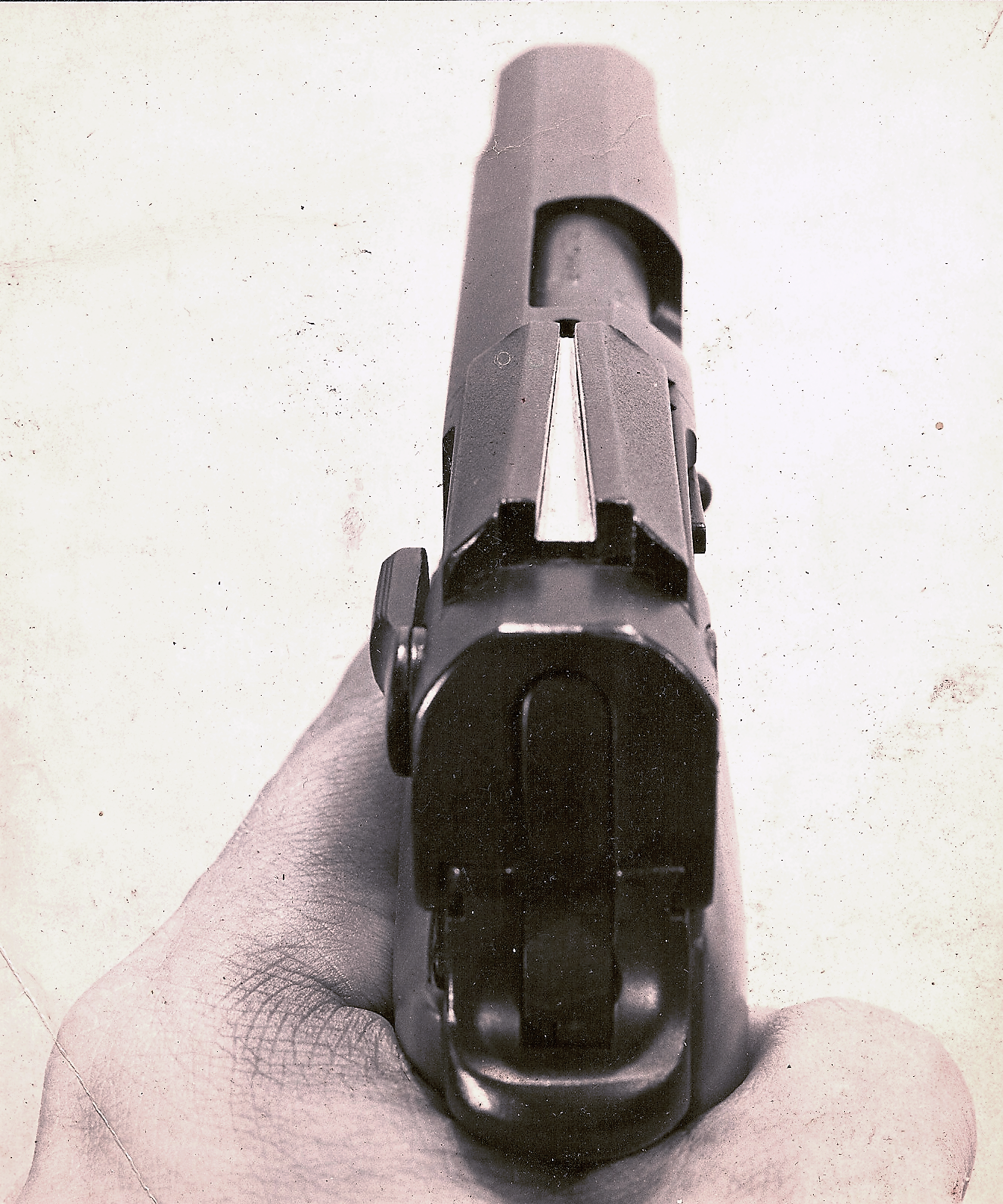
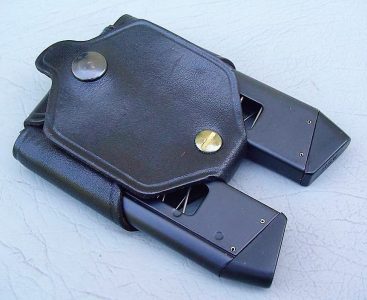
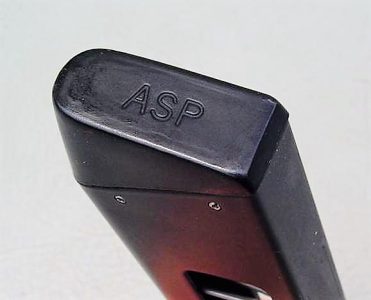
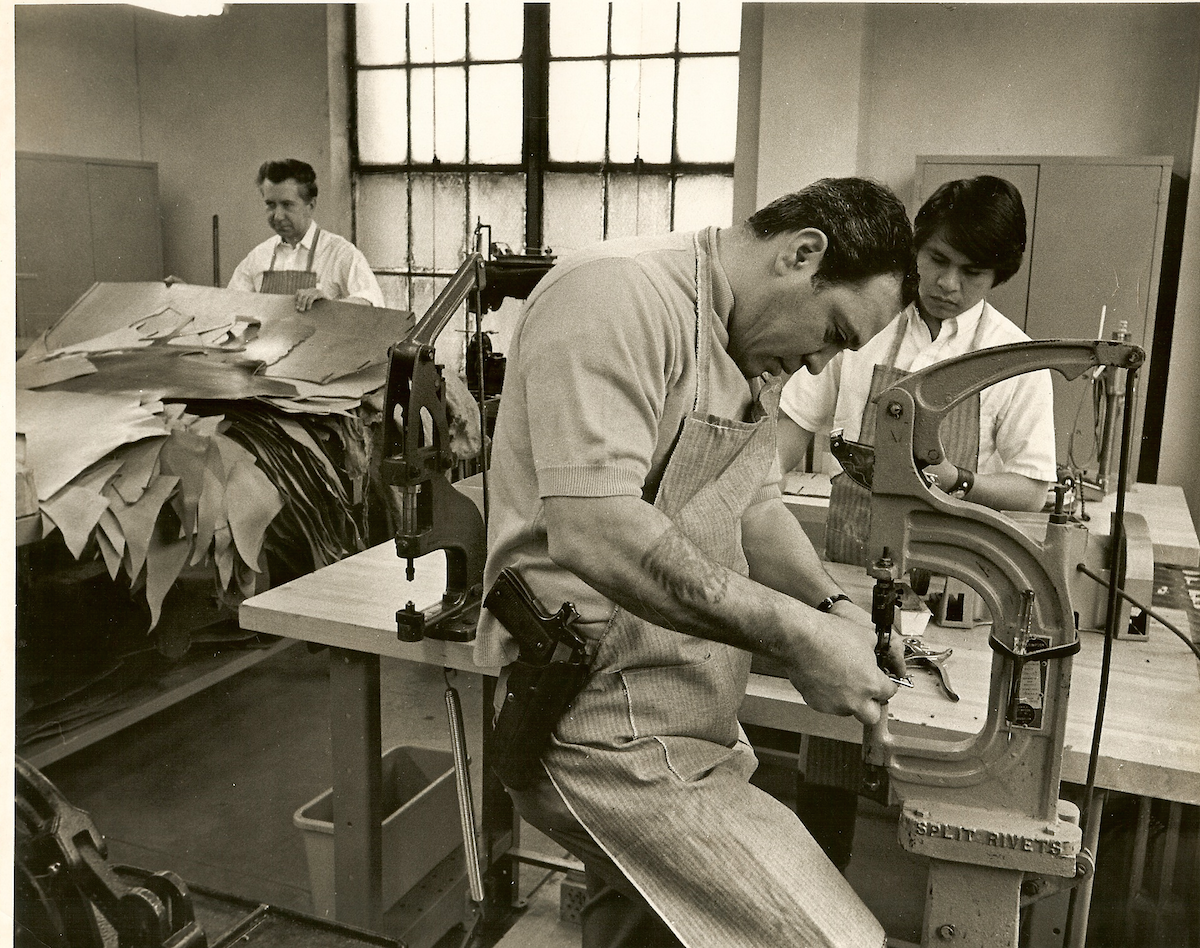
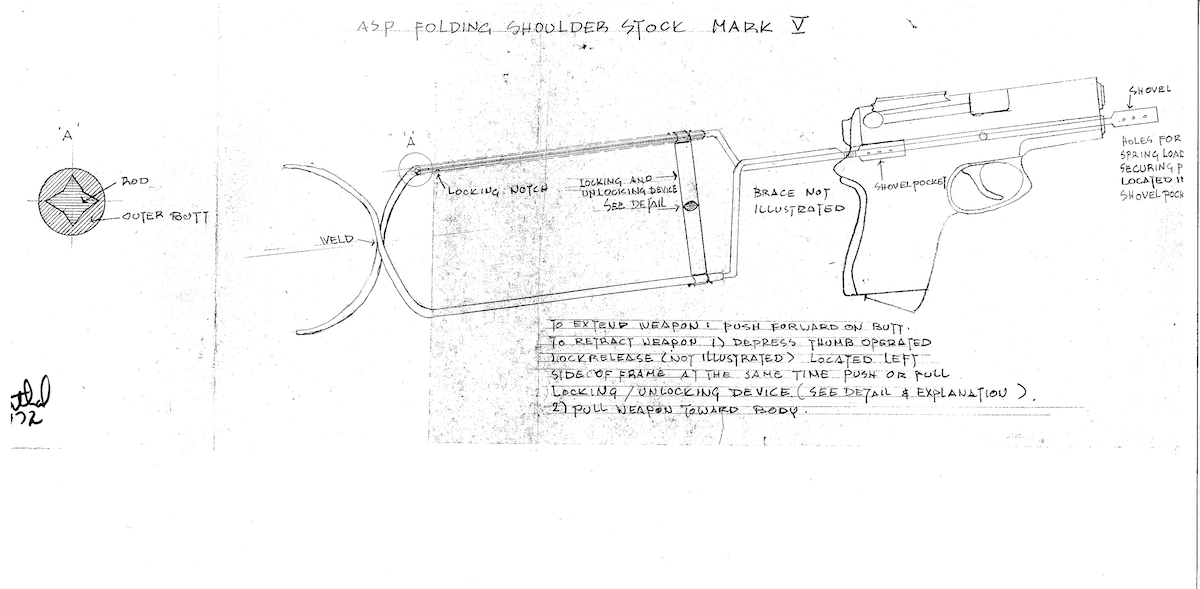

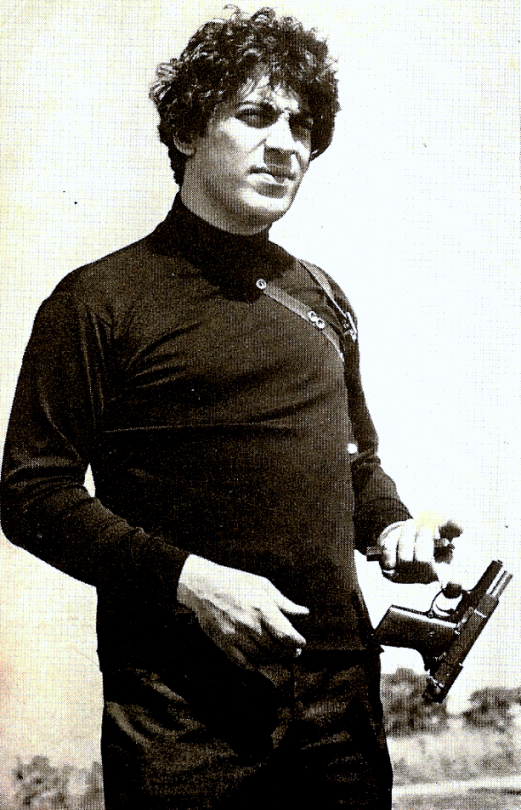

Rob, Thanks for the article. I had one of the Devils that came in on a trade. Made a mistake and let it get away. Always wanted an ASP but never found one. Built a 1911 officers model with a similar sighting system but it never had a following.
FYI, in the mid eighties, a James Bond comic was put out. It had JB being armed with one of these.
Ours is in really great shape. We’ve got 4 sets of grips, a spare sight, 5 magazines, 2 pouches, and the belt holster. Also have the original box and paperwork, plus the original brochures and advertising material from trade publications, etc.
I’m looking for a copy of the magazine article for Theodore’s Quell system from the June 1986 issue of “COMBAT HANDGUNS.” I would be willing to pay a reasonable fee for a photocopy of the article.
Thanks!
-Kirk
My father passed away a little over a year ago… He was a Marine Corps veteran, worked for the FBI ballistics lab, and later spent 40+ years working as a Special Agent for the Virginia State Police’s Bureau of Criminal Intelligence. In going through some of my father’s stuff, I found one of his gun cases. Inside that I found a variety of interesting firearms, but the one that really caught my eye was a black pistol with almost no markings on it outside of the VERY faintly-visible “ASP 9MM – PATENTED” along 1 side of its barrel… After looking up “ASP 9” on Google and doing some reading, I was blown away when I saw the name “Paris Theodore”. I remembered that name from the family rolodex (remember when people had those!?), recalled how often my father spoke with Paris over the phone, and reached out to my mom to hear what she knew about my father’s relationship to him. Apparently my dad had worked alongside Paris in the ballistics laboratory at the FBI and was one of the first investors in “Seventrees, LTD” (the holster company that Paris ran in NYC), and they had been close friends for many years — In fact, Paris’s wife had been the Cartier jeweler who created my parent’s wedding bands and she fixed my father’s DayDate Rolex when he had accidentally damaged it’s face. Anyways, I still have my Dad’s ASP 9 pistol along with 3 magazines and a custom Seventrees leather holster… Love the history behind these items!
There was quite a bit of commentary inside S&W when the 3913 and 3914 were introduced that we were bringing back the ASP. Not quite, but close. Then, a buddy of mine named Dave S. Introduced me to Karl Sokol from Chestnut Mountain Sports, who was doing semi-ASP conversions of the 3913 and 3914 models. I sent mine to him and he did the following:
– Cut down the forward edge of the slide ala JPL design that Paris did with the original
– Built up the bottom of the blackstrap to give it that ASP curve
– Relieved out under the trigger guard were it met the frontstrap to also mimic the ASP grip
– Single sided hammer drop/safety like the ASP
I didn’t want the guttersnipe and he didn’t have the $20K to spend on injection molds for the clear grip panels, so that never happened. Much as I loved it, I loved the excellent DAO trigger on the 3954 even more and wound up trading away that semi-ASP. Still have it to this day and it fills the bill nicely between my Glock 43 and Glock 19. It’s actually riding in a Blackhawk TecGrip at 2:00 as I type.
If you want as close to an ASP as you’re going to get, hunt down a 3913 or 3914 and send it to Karl. I don’t think he offers it as a standard package anymore, because the pistols aren’t available from S&W anymore. But, if you can find one and asked nicely, who knows?
http://Www.chestnutmountainsports.net
Unable to afford an Asp pistol, I too purchased a 3914NL. The “poor mans Asp”. I carried it off duty and on court days. I still carry and shoot it regularly. It is a shame that the current company calling itself S&W does not still produce it.
Tnx for a great article–I also had a “Wisconsin” ASP NIB with the buffalo horn grips and “lapel pin”–and foolishly traded it away still NIB for $700 or so–wish I still had it–along with my many early Pythons and Diamondbacks !!! DMD.
I have owned several. Unfortunately all you find fall in to one of two flavors – Pristine, NBF or shot to pieces and worn out. The shooters I had were extremely finicky about ammo and my regular gunsmiths were afraid to work on them. Gave the last one I had away because it was basically unfunctional.
Actually, I was always under the impression the ASP was one of Major Nonte’s contributions to pistolcraft.
Hearing of Mr. Theodore’s involvement is a bit of a surprise.
The Smith DA triggers were always gruesome. More recently, I bought a 39-2 that had a quite decent DA, just for nostalgia and to see what the gun was like; here in Illinois, our State Police have always been described as the first major US police agency to have adopted a semi-auto, and it was the 39 (in 1966).
One hopes that ASP overcame the trigger issue.
Major Nonte was also an early practitioner of the cut-down 1911 and he produced a Defender-sized (or less gun) that had me wanting it.
I would first like to say thank you for allowing me to view this Article on the ASP 39 Smith & Wesson Conversion. I bought one of the original ASP designed by Paris Therodore. I have to say when I first saw it just like the pawn shop owner saw we both thought someone had cut up a older model 39-2 and he sold it to me for $125.00, when I got home I started my research on this pistol found out I had hit a home run. This pistol has got to be the best Conceal Carry Weapon I own. It shoots like a dream with no malfunctions.
I remember buying that magazine with the article back in 1972. And the guy’s name was Paris Theodore, not the other way around. He was quite a character….
http://www.nysun.com/obituaries/paris-theodore-63-inventor-of-spy-weaponry/44151/
if the guttersnipe sight was so effective, why is it not more popular
It wasn’t great in low light.
I remember those.
A friend of mine had one in the 70s & I handled and played with it a bit back then. I was unimpressed then & I remain unimpressed to this day. S&W autos from that era were terrible and all gussied up with their 212 modifications the Asp remained that same bucket of crap. Just prettier. Kinda like lipstick on a pig.
During my “tenure” in ‘Nam, I spent considerable time in and around Saigon and US embassy, where I came across a couple of ASP’s; but never had opportunity to acquire or even fire one: but didn’t feel shortchanged, as I carried my personal Browning High Power, often grateful for extra mag capacity. Never forgot the ASP though and acquired and carry a “modified” 3914 as off duty weapon while employed by KCMO PD. Thin slide made it ideal for IWB carry; but did have horrible DA trigger which I had improved somewhat. SA was fine! After leaving PD served me well for years as ‘summer” or “dress” carry and I still have it! Saved my butt a few times and can’t bear to part with it!
I consider my S&W 3914NL a modern (although sadly discontinued) reincarnation of the ASP. It has nearly all the major attributes and handles and carries perfectly for me. Thank you for an interesting and informative article.
As I recall, the S&W model 3913 was quite ASP-like. The frame was slimmed and trimmed, the barrel & slide were shorter than the 39. I think that the magazine still held 8 rounds, though.
I love the sight acquisition…
The new Caracal F Enhanced Pistol has a sight acquisition very similar to this one. Check it out!